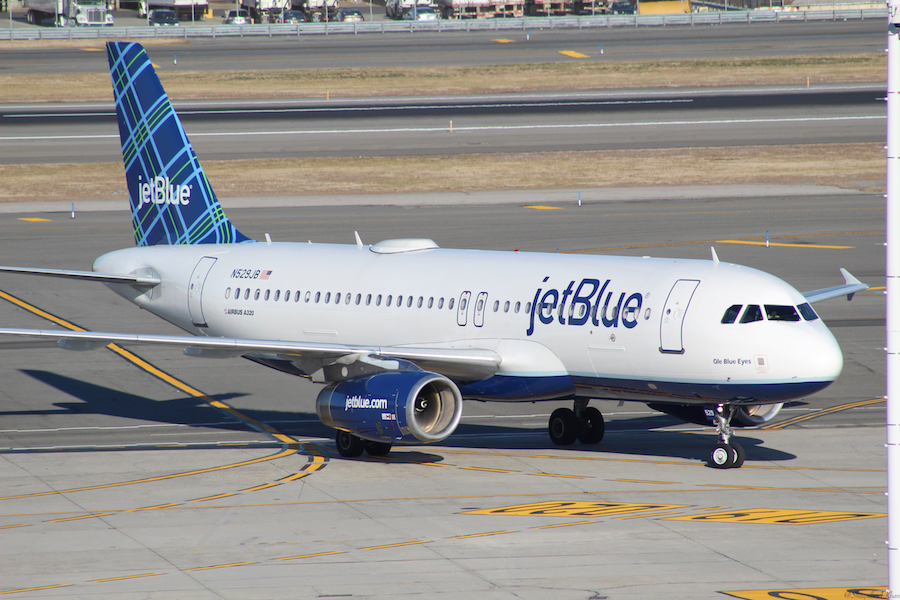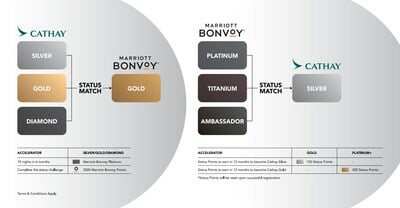I think the message was… if you are into Luxus this is your cruise line.
Faberge Brand is Provocative
The House of Faberge is controversial. In 1885 the brand’s name was equated with both opulence and scandal. While the majority of the Russian population struggled to feed their children, the imperial family lived in luxury, with the gifting of eggs becoming an annual occurrence. Each year the tsar tasked the House of Faberge to design new creations that had to be both beautiful and playful. In 1898 he gave one Lily of the Valley egg to his wife, Empress Alexandra Fyodorovna, and another to his mother as Easter gifts. The current value of each egg is US $13 million.
The opulent ornaments were symbolic of how out of touch and oblivious the Romanovs were in their final decades of power. The unpopular Tsarina Alexandra refused to court the Russian public and explained to her grandmother, Queen Victoria, that it was not “necessary to earn the love of the people” because the royal family were already divine beings.

In 2004, the Russian billionaire Viktor Vekselberg, placed his large collection of eggs in the Faberge Museum in St. Petersburg, Russia. Vekselberg has a close relationship with the Kremlin and was implicated in investigations of election meddling in the 2016 USA presidential elections.
Oligarch, Alexander Ivanov, developed the Faberge Museum in Germany which was raided by British law enforcement a week before Vladimir Putin was due to gift the Rothschild Egg to the Ermitage. The investigators claimed the museum failed to pay a tax on objects bought over the prior 15 years in London. Ivanov lent part of the collection to the Hermitage to put on exhibition (2021). However, it was reported that a London art dealer contacted the Hermitage criticizing them for the exhibition of the eggs as 40 percent of the artefacts were fake.
What is Luxury? Then/Now

In the Merriam-Webster dictionary, luxury is equated with lust, originating from the Latin word LUXURIA meaning extravagance. In the Elizabethan Era (1558-1603), luxury was associated with adultery and morphed into a lifestyle that focused on opulence and splendor. Luxury required money and lots of it. Luxury requires the engagement of all the senses – visual, auditive and tactile as well as smell. A few countries lead the luxury space with German products ranked highest for quality (Statista), while Italy is considered the strongest in design with Switzerland is noted for all luxury products and services.
Today the luxury focus is frequently associated with what money cannot buy such as freedom.
Research at Cornell University suggests that luxury is currently equated with experiences rather than material things. Consumers seem to prefer accessible luxury as opposed to conspicuous consumption, selecting excellent customer service combined with fun while affluent consumers continue to appreciate free shipping and personal shoppers; however, the newest focus is on technology and contemporary design.
Millennials and Gen Z consumers account for 30 percent of global luxury sales which is expected to increase to 45 percent by 2015 (Bain & Company). These market segments consider ownership to be overrated (think Netflix, Uber, and Rent a Runway). Loyalty is likely to be created when the memory of the moment of the purchase extends beyond the acquisition.
Conspicuous consumption (Thorsten Veblen, 1899, The Theory of the Leisure Class) is on the decline according to Professor Elizabeth Currid -Halkett, (The Sum of Small Things: A Theory of the Aspirational Class) because many consumer products have become widely available to all classes, thanks to globalization and advances in technology. Conspicuous consumption has been replaced by new, social, environmental, and cultural awareness. In recognition of this change, luxury brands now link their fashion image to their commitments to renewables and recycling, showing celebrities in sustainable gowns and executives mingling with A-listers at events promoting environmental and social awareness.
In light of the change in the perception of luxury, it is curious that NCL has hitched its product positioning to luxury and Faberge making the new relationship a questionable marketing strategy.
Regent Seven Seas Egg Objet and Faberge Alliance
The Seven Seas Grandeur (virgin sale November 2023) in cooperation with Faberge, has defined their luxury space to include the ship’s new art collection. The Journey in Jewels will feature a Faberge egg along with displays of artwork by Picasso, Miro and Chagall across the fleet. The ship has been reimagined for the future and illustrates the cruise line’s Heritage of Perfection, offering guests “transformative experiences” and “unparalleled service.”
The luxury theme will become experiential via two unique voyages. The first exclusive sailing will be hosted by Faberge’s Curatorial Director Dr. Gez von Habsburg (June 2023) with an itinerary that starts in Southampton, England and continues to Stockholm, Sweden with exploration of Faberge collections in Denmark, Norway and Sweden. In 2024, Sarah Faberge, the great granddaughter of Peter Carl Faberge and founding member of the Faberge Heritage Council will host a second voyage.
Not All Cruising is Linked to Luxury
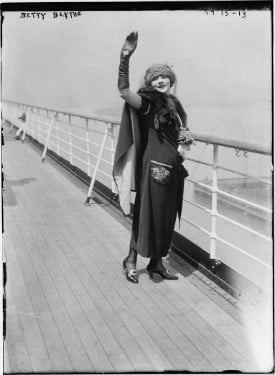
There was a time when cruising was locked securely in the “traditional” luxury space. Servants packed steamer trunks, brought them to suites on the ship while wealthy passengers sipped champagne along the rail as they waited to sail to Europe. Yes, there was another way to cruise to Europe, shovel coal into the boiler; today the option is to become a member of the crew.

Money: Class and Access
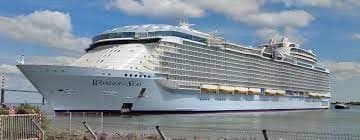
Cruising in the 21st century is stratified, and passengers can select mainstream, premium and luxury ocean cruises plus premium areas aboard mainstream cruise ships – all based on price. Cruise ships can be incredibly large. At nearly 237,000 gross registered tons, the Royal Caribbean’s Wonder of the Seas carries up to 6,988 passengers plus 2,300 crew. Cruise ships can be over three football fields in length, and feature, in addition to lavish suites, swimming pools, water slides, ice skating rinks, basketball courts, zip lines, thousands of live plants, dozens of bars and restaurants, live entertainment centers, lots of shopping opportunities, and fine art collections.
MSC Cruises weigh in at 215,863 gross tons and is the largest cruise ship following Royal Caribbean International’s Oasis class as well as MSCs first LNG-fueled ship and the first large cruise ship fitted with fuel cell technology. The MSC World Europa measures 1,094 feet in length and boasts 20 decks holding 2626 passenger cabins giving it a capacity of 6,762 passengers with a crew of 2,138.
Premium cruise lines: Target market? Mature travelers with a nod to families. The atmosphere in quiet zones or adult-only areas may be calm and the possibility of open spaces; cabins include inside and outside options; the lower the fare, the greater the chance of no view and no access to fresh air. Although the food may be ok, passengers pay for drinks.
Mainstream cruises are often on bigger ships and frequently destinations in their own right.
Family holidays dominate this space and fares may be reasonable; however, be prepared for additional charges posted to your account for anything identified as “extra.” This is assembly-line cruising with food mass produced, unless you pay “extra” for onboard signature restaurants where the focus is on FUN rather than gourmet dining.
Cruise Within a Cruise
In the 1970s, there was only one-class of cruising. Now options may include a premium class section on a mainstream vessel, effectively a ship within a ship giving “others” or “upper class/wealthier” cruisers a chance to escape crowds and queues, providing space, quiet and a private restaurant.
Luxury cruises (think 5-star boutique hotels/resorts) carry about 100 guests. A low passenger to crew ratio means that service is likely to be attentive. Even the lower category cabins may be more spacious with high-end toiletries, drinks and other services included in the price. Food is likely to be as good as a luxury resort and it will be easy to get on/off the ship. Experts are likely to be guiding groups to the attractions at off-board activities.
Value or Excess
Is the price paid for a “luxury” cruise worth the cash? Ralph Girzzle (cruiseline.com) finds that the extra cash upfront provides better accommodations, extra services, “free” shore excursions, plus food and beverage opportunities that would cost much more if purchased a la carte. Luxury fares are up to five (5) times more expensive than mainstream cruise prices. How much will it cost? TripAdvisor finds that the fees will run from $300 – $600 per person per night, plus $50 – $100 (cash) for tips, taxis, shore excursion trinkets, etc.
Safe to Cruise? Perhaps
Reading that 800+ Covid 19 people were on a cruise ship docked in Sydney, Australia should be a major CAUTION signal. This is a serious reminder that the pandemic is far from over and cruising presents a clear and present danger.
Dr. Brian Labus, MPH, an assistant professor at the University of Nevada, Las Vegas, suggests doing a risk/reward analysis: Is your health important? Is an illness likely to impact negatively on your lifestyle? Does your health insurance cover medical events outside the USA?
When many people share the same space (i.e., a cruise ship), there are risks for outbreaks of illness. Cruise ships offer a high-density environment creating perfect spaces for many people to get sick in a short time period. If the itinerary for your dream cruise places you in the middle of an ocean, miles away from a healthcare and hospitals for several days, and you become severely ill, what will you do?
Most cruise lines have ceased their vaccination and/or testing demands; however, many continue to have safety protocols in place. The specific guardrails vary with each ship and the company’s website should be reviewed to determine protocols and your comfort zone in following the procedures.
Ier Dir Gitt
Before heading to the dock, and prior to boarding a cruise ship, it is advisable to limit personal exposure to people outside your personal household, wear a mask in crowded settings, practice good hand hygiene and take a rapid test. Although photographs suggest that there is plenty of room for social distancing onboard, these images can be misleading; however, personal “awareness” is possible, including cleaning all parts of the cabin with anti-microbial wipes, using hand sanitizers, wearing a mask, and spending as much time as possible outside on the decks or on your balcony.
If there is an outbreak on board, listen to the instructions from the crew. If you did your homework, you checked with your travel agent and the cruise ship website, and are familiar with the procedures established by medical professionals – so you will know what to do. In addition, if you packed smart, you have Covid test kits in your luggage that you can use to determine if you are sick with Covid or something else. Do not try to hide your illness. Let the ship’s medical team know what you are experiencing and follow their recommendations.
Sidd Duerchduechte
Before taking out the credit card to pay for the cruise, remember:
1. Cruise ships can be noisy. Large ships tend to have over 3,000 people.
2. Sea sick. For some travelers, discomfort includes nausea, headaches, vomiting, dizziness, shortness of breath, and/or drowsiness. In addition, there is the possibility of Covid 19, norovirus, etc.
3. Ze vill Sonn. Lying on deck or at a port beach, too much sun increases the risk of cancer, heat stroke, cataracts, dizziness, fatigue and skin blisters/burns. Consuming alcohol at the beach increases sun damage to the skin.
4. Liewensmëttelvergëftung. Eating too much and too often, can cause vomiting, stomach pain, abdominal cramps, dizziness and muscle weakness. Medical aid onboard is very limited. On the Royal Caribbean’s Ovation of the Seas, 195 passengers experienced vomiting and diarrhea after eating too much buffet (5 were in need of hospitalization).
5. Unhealthy food. From burgers and fries to doughnuts, cakes and buffets, there is temptation to overeat. Open bars and lots of socializing can cause havoc to the GI tract.
6. Kollisiounen. Ships sink (think Costa Concordia sinking off the coast of Tuscany, Italy), and 16 cruise ships sank between 1980 and 2012. Even if the ship does not sink, any collision can result in injury.
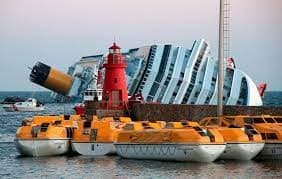
7. Bett Käfer. They ride along in luggage and inside furniture making cruise cabins ideal accommodations. Crowded ships are perfect places for the bugs to be passed from one passenger to another.
8. Kriminalitéit. Crimes run from assault with serious bodily injury, firing or tampering with the vessel to homicide, kidnaping, and missing US nationals, plus sexual assault, suspicious death, and theft of over $10,000. Crew members have been known to commit crimes against passengers.
9. Stuck. Cruise ships are known to lose electricity or air conditioning, making life onboard uncomfortable and even dangerous. On a Carnival Triumph voyage the power was out for four (4) days with more than 4,000 passengers and crew without a/c, light, water, food, or working toilets before it was towed into Mobile, Alabama.
10. Ships do not wait for you. Flight delayed? Running late for embarkment? The ship will not wait for your arrival. Lose track of time at different ports? The ship sails with all your belongings and this can be a disaster as you have to make your own way back home or to the next port in order to get back on the ship.
Going?
If you decide the risk is worth the reward, do not leave home without fully comprehensive travel insurance to include everything from sickness and accidents to missing departure times and airline reservations. Check your telephone/internet data charges and make sure your fees include onboard communication (at reasonable prices). Do not be the first in line for the buffer (every day), and use the stairs more frequently than the elevators (crowded and slow). Do not lose or misplace your ID card and do not overpack. Bring lots of hand sanitizers and handwipes, along with your prescribed meds and OTC drugs.
“Life is either a daring adventure or nothing at all.” – Helen Keller
Gutt Rees!
© Dr. Elinor Garely. Dësen Copyright Artikel, Fotoen abegraff, däerf net reproduzéiert ginn ouni schrëftlech Erlaabnes vum Auteur.
WAT VUN DESEN ARTIKEL WEI HUELEN:
- In light of the change in the perception of luxury, it is curious that NCL has hitched its product positioning to luxury and Faberge making the new relationship a questionable marketing strategy.
- The unpopular Tsarina Alexandra refused to court the Russian public and explained to her grandmother, Queen Victoria, that it was not “necessary to earn the love of the people” because the royal family were already divine beings.
- However, it was reported that a London art dealer contacted the Hermitage criticizing them for the exhibition of the eggs as 40 percent of the artefacts were fake.











